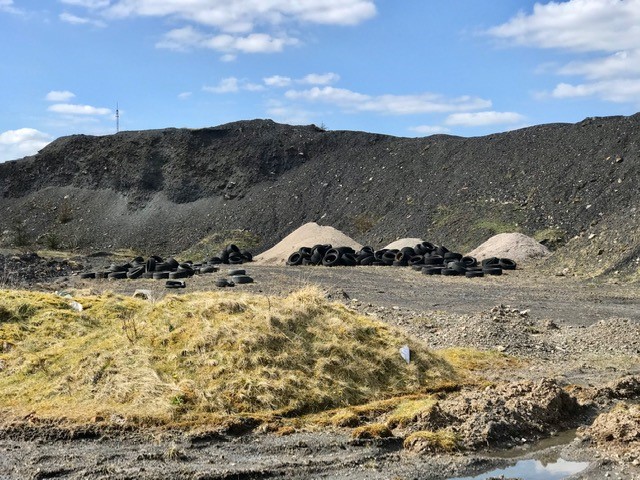Landscape Legacies of Coal began back in 2018 as a small self-contained project commissioned by the Macrobert Art Centre https://macrobertartscentre.org/ at the University of Stirling to support a community heritage initiative based around the theme of coal. The project explored the landscape history of two former colliery sites, the Devon at Fishcross, Clackmannanshire and Polmaise 3 & 4, Fallin, Stirlingshire, from closure of the pits through to present day. Together with a look at how the public engage with and value, if at all, these marginal and ambivalent spaces.
The study adopted a mix of traditional historical research, on-site observations with face-to-face interviews, and to capture the wider context we used an online questionnaire. The study revealed that the residents, primarily adults, regularly use the sites for a variety of leisure activities, to experience nature and to reflect and seek peace and solitude.
In terms of emotional engagement, a small minority of respondents (less than 5%) expressed a degree of interest in the site often borne out of a direct connection with the mine or its history but a dismissal of any ongoing importance attached to the empty space left behind. The majority, in contrast, found value in seeing and walking through these abandoned spaces but at the same time it was often a very visceral and emotive experience. Although the sites represented a profound of sense of loss, at the same time they also provided a sense of historical and personal continuity, an anchor point for identity and a link to the past that helped to understand the present.
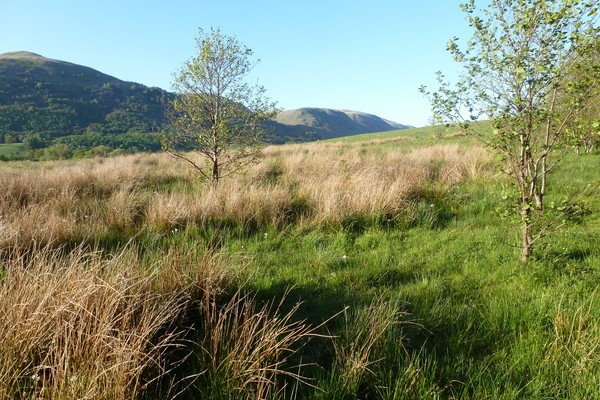

The full study ‘I see the site of the old colliery every day’: Scotland’s landscape legacies of coal was published in Landscape in February 2021. Also see (https://www.scotlandandcarbon.com/landscape-legacies-of-coal) for a summary.
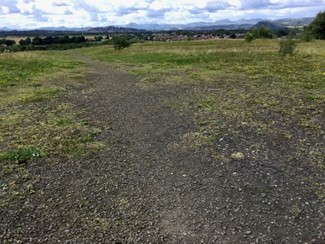

The second, and perhaps more familiar strand of the project, commonly known as the ‘Coal App’, was the community facing initiative that offered an expanding series of curated heritage walks that used the medium of landscape and surviving physical remains to tell the story of Scottish coal mining on a free to download mobile phone app.

The App has continued to develop since the last update in 2020 (see https://thecoalbunker.stir.ac.uk/2020/06/19/the-coal-app-one-year-on/).
In 2021 we returned to one of the first areas of exploration, the east Stirlingshire villages and once again collaborated with the project’s original funder the Macrobert Arts Centre and Scene Stirling on a series of small creative community engagement projects inspired by the local mining landscape: ‘Vantage Points’ https://scenestirling.com/vantage-points.



Figure 6 As part of the Vantage Points programme, artist Joanne Boyle put together art packs with materials to inspire self-led home based art work on windows around Cowie to create an open-air gallery. Cowie’s historic coal mining connections were reflected in many of the windows.



Figure 7 A selection of mining landscape painted stones by local school children in collaboration with Joanne Boyle from the Scene Stirling Vantage Points Creative Network. These are now placed along the link route between Plean and Cowie walks on the app to create a treasure hunt for specifically children.
Continuing artistic theme, we also featured ‘Inscriptions in Arcadia’, a series of temporary art installations by visual artist Audrey Grant (https://forthvalleyartbeat.com/artcycle-project/) located on sites along the Bothkennar Route at Skinflats, Falkirk, that relate specifically to traces of past industrial and cultural activity. The inclusion of Audrey’s art work allows app users to understand and experience industrial landscape history through a very different lens.

The number of routes has expanded to 22 with 9 more in various stages of production. We have also extended our coverage beyond the Scottish border with routes in Kent, Leicestershire and St. Helens, Merseyside. This latter route recently featured in the Guardian. https://www.theguardian.com/travel/2021/sep/28/coal-mining-heritage-walking-app-st-helens-merseyside)
The app has been downloaded around 2,400 times, mainly in Europe and the UK, but also Asia, around the Pacific, US and Canada, a handful in South Africa and one in Brazil. It is, however, coming to the end of its life and functionality will begin to decline from around the end of the year. So, to the future. Our ambitious plan hatched back in 2020 to create a national eco-museum of the Scottish mining landscape remains. Back in early May we submitted a research funding application ‘Coalscapes and Communities’ to significantly expand and extend the original study of former colliery sites. The proposed project adopts a strong interdisciplinary approach that brings together environmental history, sociology, ecology and the creative arts working in collaboration with local communities and in partnership with the National Mining Museum Scotland (NMMS). The study will explore community experience, perception and understanding of these marginal landscapes and the characteristics that underpin their construction, set against the current drive towards a carbon zero economy.
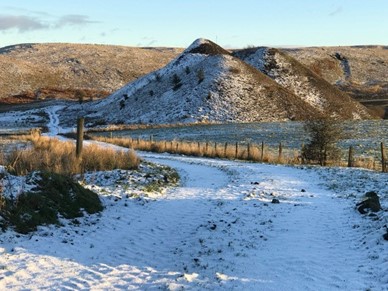
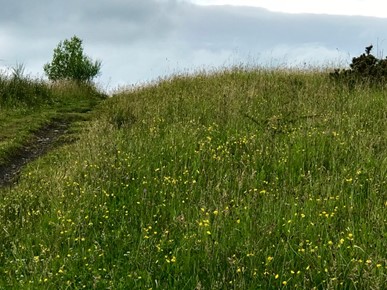
The project outcomes will have important implications for the governance and the future management of these landscapes which are at real risk of being lost and or forgotten. Coal suffers from a poor reputation associated with environmental degradation and climate change, and the landscape history of extraction and the voices of former colliery communities are quietly fading into the background. Shifts in demography from mining communities to dormitory villages results in many residents having no knowledge of their local landscape. Importantly, in 2020 the Scottish Government announced a £50 million fund to tackle vacant and derelict land. This currently amounts to around 11,000 hectares, (post extractive landscapes account for 35% of the total) as part of a ‘green recovery’ from the Covid-19 pandemic. This will include potential redevelopment with affordable housing, low carbon industrial development but also woodland and ‘other green spaces’
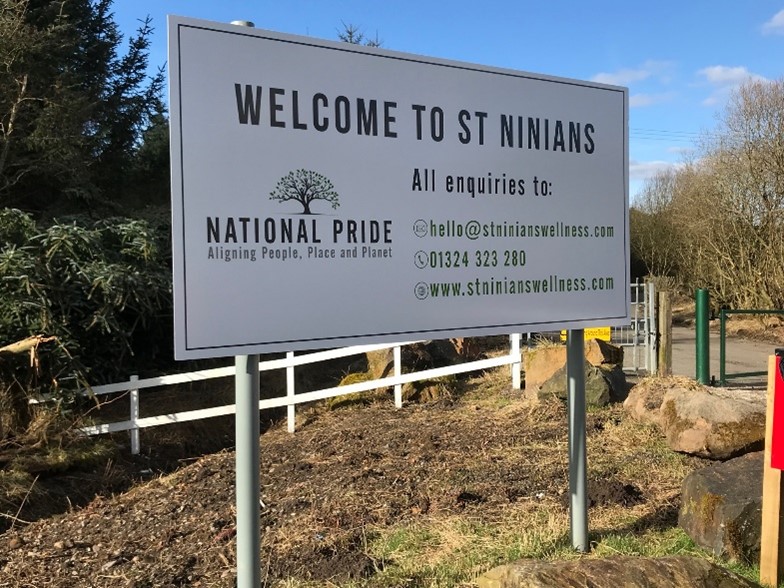
Community collaboration continues into the project outputs. This includes a co-produced edited volume based around ‘a year in the life of the Scottish bing’ that will reflect the project’s public engagement activities and research. We also plan/the creation of a standalone artwork ‘Cairns of Impressions’ cast with gathered material from the former colliery sites and symbolising the ‘coalscapes’, and an open-air interpretation at the NMMS based on the ecological data to highlight the role that former colliery sites have in a decarbonised future in terms of biodiversity and accessible green space particularly in an urban setting.

Finally, the primary public output and legacy of the project will be the re-design and rebranding of the app as an eco-museum of coal mining landscapes.
The concept of an eco-museum originated in France and first emerged in the 1970s. They are museums without walls and shelves instead they are based around a specific landscape. With a focus on heritage, memory and community and celebration of a sense of place.
Essentially not that different from the coal app that already offers a series of walking routes through a distinctive landscape; the Scottish Midland Coalfield, that narrates the story of the industry and its communities through the medium of landscape, art, oral testimony, historic images and maps.
The aim is to primarily shift to a web-based application that brings the current routes together with additional new ones generated by the research project, the current website (www.landscapelegaciesofcoal.com), Twitter and Facebook feeds and the ‘Coal Bunker’ blog, and to rebrand with new features, including an ecological component focusing on ‘coalscape flora’. We will also continue to support routes out with the Scottish coalfield.
We are also seeking funding for 10 years maintenance to allow continued expansion of the routes beyond the 3 years duration of the proposed research project. The new platform will (hopefully) remove all the current design faults, such as the inability to expand the maps and images, allow video, permit an expanded range of icons denoting differing points of interest such as brickwork and transport infrastructure along the route, and permit downloading and printing.
Now begins the long wait for the results of the funding application (due in December). In the interim we are ensuring that all the data for the existing routes is compatible for transfer, and Kerry Campbell, who joined the project as a volunteer earlier in the year, is working on finishing the West to East Wemyss route.
Catherine and Ian May 2022

